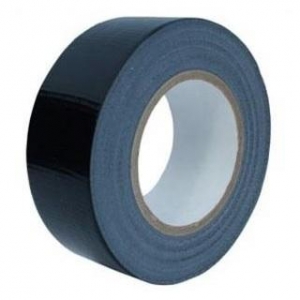

Since it is simpler and easier to use, cool-set fabric glue is becoming more popular than heat-set adhesive when it comes to garment repair. The disadvantage is that this type of adhesive does not dry by itself. One advantage of heat-set fabric glue is that it is not gooey, and the adhesive will not stick to itself, making it a lot easier to repair a tear. The adhesive ingredients activate at a specified temperature and establish a strong bond that crystallizes when the heat is removed, increasing its strength. Heat-set adhesives are fabric glues that attach to fabric only at certain temperatures. Permanent fabric glue is ideal for clothing repair and other projects that require durability. This glue will not come off the fabric after washing. Since permanent adhesives are insoluble after drying, they provide stronger bonding that will last a longer time. Temporary glue is ideal for tasks that involve a lot of repositioning of the fabric, such as quilting. You can also quickly break the bond of temporary glue before it dries. This means that the temporary adhesive will fall off the fabric when it comes into contact with water.Īny torn fabric treated with this type of glue is not machine washable, since washing causes the connection to break and the tear to reappear. The most important distinction about temporary glue is that it is water-soluble. There are numerous varieties of glues to choose from, each with unique advantages that are useful for certain applications but not others. Types of Fabric GlueĪll fabric glues are not made equal, and knowing which one to use to repair and mend your item is quite important. If you don't like sewing or need to mend clothes with a tear quickly, this is a perfect choice. Fabric Glueįabric adhesive is a no-sew option that laminates fabric tears together by forming a temporary or permanent connection. Depending on the location of the tear and its accessibility, the following no-sew alternatives for repairing a clothing item may work for you. If you fall into this category, finding a no-sew way to mend torn fabric, a simple tear, or small hole is a must.


Best Ways to Repair Fabric Tears and Holesįabric tears and holes are frequently fixed by stitching or sewing, but not everyone is skilled with a needle and a thread.

Prolonging the life of our garments reduces carbon emissions, water use, and preserves other resources related to clothing manufacturing. Not only does mending allow you to continue wearing a favorite piece, but it is also the sustainable choice by extending the life of your clothes. Remember that T-shirt you still have from the first concert you attended? You wore it until it faded, but you had to stop wearing it after finding a hole or two in it. How many times have a small hole or tear kept you from wearing a treasured item? Instead of putting a beloved, but damaged piece in the back of your closet or bottom of a drawer, try mending it by repairing the tear or hole. You can also check out the latest sewing machines and embroidery machines right here.3 Ways to Repair a Clothing Tear November 02, 2022 Expand your knowledge about sewing and quilting with our books and software. These binding tapes will protect your heirloom items.īrowse the JOANN website or walk into your nearest store to buy fasteners and belting, pins and needles, sewing tools and more for your next project. Our collection also includes blanket binging, quilt binging, single fold tapes, twill tapes, double fold tapes, craft glue and more. Use our Wrights bias tapes to lend a decorative touch to your projects or seal raw edges with our Wrights hem tapes. Shop for tapes and braids at JOANN to give your fabric projects the perfect finish. You can also check out the latest sewing machines and embroidery machines right here.


 0 kommentar(er)
0 kommentar(er)
